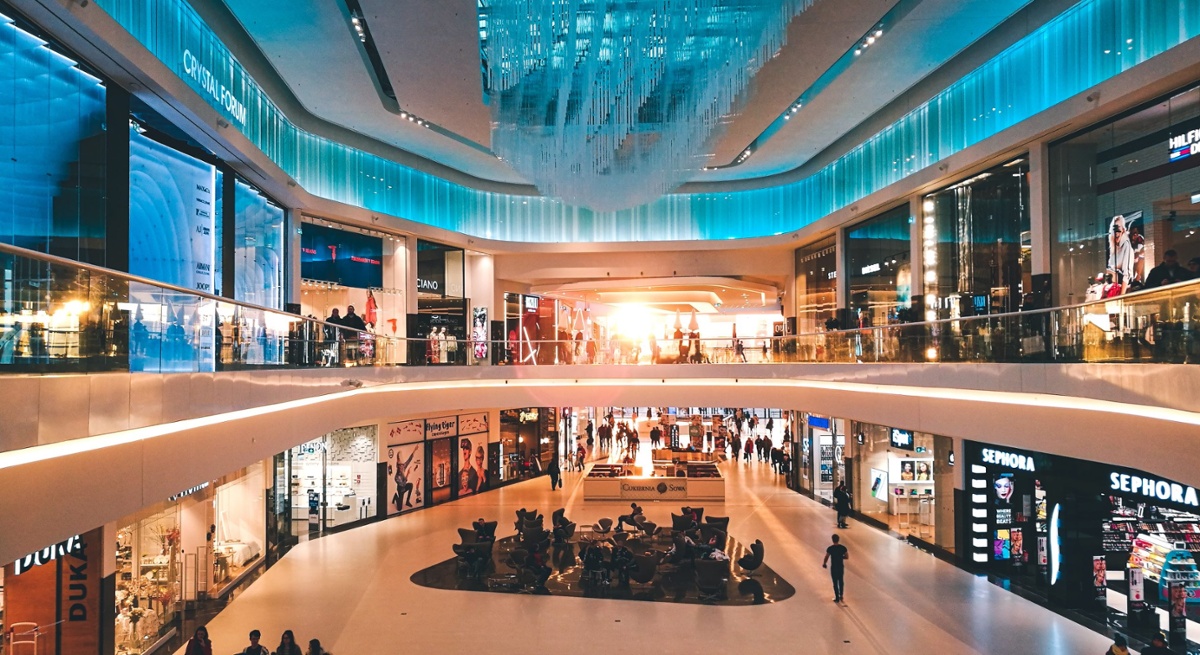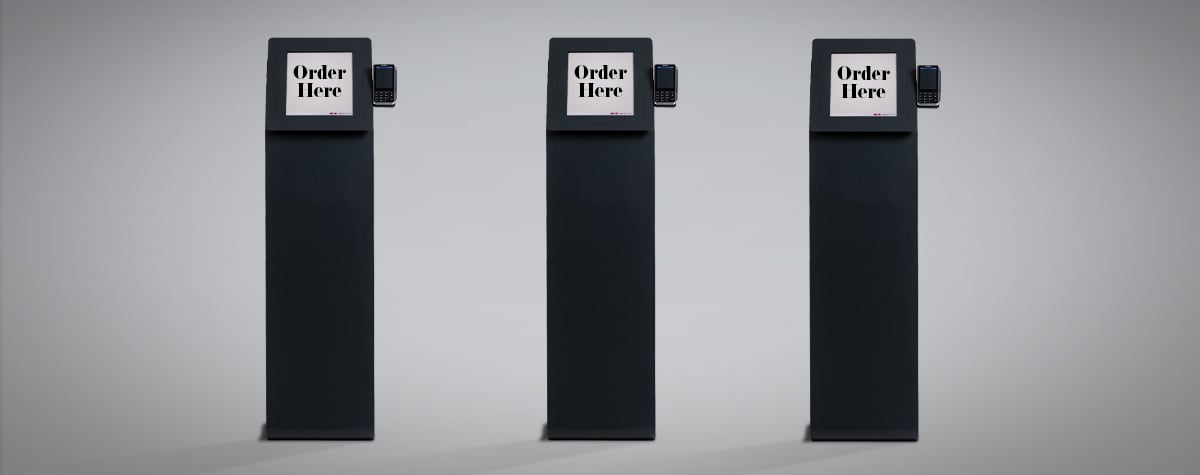Designing Unforgettable Retail Experiences with Digital Signage
Beth Warren, SVP of Marketing at Creative Realities, has a passion for growing brand value through modern behavior-based strategy, omni-channel technologies and CX design. With a strong commitment to thought leadership and education, Beth is dedicated to raising the bar for excellence and creativity within the digital signage community specific for retail. In today’s blog, Beth shares her insights on designing retail experiences with digital signage and offers perspectives on how to create engaging retail environments.
The future of retail is set to be "hyper-experiential," particularly appealing to younger shoppers. This shift towards experience is driven by several key factors. First, advancements in technology are facilitating innovative and effective experiential retail. Second, despite the post-pandemic world, people continue to seek opportunities to spend time outside and engage with others. According to insights from Canvas8 on what they call "experience hunters," 58% of consumers believe immersive experiences influence their purchasing decisions. This means that six out of ten people place a high value on how retail makes them feel.
This places a heavy burden–and incredible opportunity–on physical stores, as stores have evolved beyond the transactional. The physical expression of the store is more compelling and vital than ever as demonstrated by shopper demand for a full sensorial, unforgettable, original, and connected experience from their favorite retailers and brands. I’m seeing new demand for immersive experiences that deliver the wow factor and inform/inspire consumers to expect something unique and memorable–from banking to bix box stores.
Digital Signage helps create a place where people want to dwell, not just transact. So, it is often utilized to help with the more practical requirements of a physical environment:
- Activate visual merchandising and drive shop-ability at the shelf.
- Provide a contextual and comparative content experience that helps shoppers make decisions that drive sales, reducing cart abandonment.
- Help sales associates deliver customer service in ways that are transparent about inventory, new clientelling platforms, and services like click-to-ship or styling advice.
- Deliver an element of recognition and personalization that shoppers crave – especially those whose loyalty stems from mobile app usage.
Digital signage technology significantly transformed how Calvin Klein, Perry Ellis International, and Puma activated their shop-in-shops within multi-brand/department stores. Traditional product displays often force customers to search through shelves for their desired style and size, leading to disorganization, frustration and cart abandonment when items aren't easily found. We worked with Macy’s to create a cohesive and enhanced shopping experience using digital signage to activate their premium store locations.

Through a combination of digital visual merchandising and curated content, we were able to improve navigation, deepen customer engagement, and inspire moments of discovery that helped make Macy’s brand a far more modern and more shoppable destination for locals and tourists alike.
Farewell Pandemic: Hello to change for Good
In hindsight, the pandemic has been beneficial for technology in retail, accelerating digital adoption and catering to new consumer behaviors. This has resulted in the long-lasting implementation of various convenient features such as frictionless interactivity, mobile-in-store, buy online/pick up in-store or curbside, and new employee and sales associate productivity platforms.
For example, we worked with Verizon to install voice-activated display during this time. Driven by the demand of touchless experiences, voice-command digital merchandising was deployed at 1,400 stores to launch 5G Entertainment and 100 to launch 5G at Home. Even with Covid restrictions on store occupancy levels, stores reported positive reactions from customers using the experience, and the company exceeded its sales objectives for entertainment products.
Digital Signage Now Monetizes
Retailers are increasingly looking to extend the success of their web- and mobile-based Retail Media Networks (RMNs) into the physical store environment through digital signage. This approach allows retailers to generate advertising revenue that offsets the cost of the network while simultaneously driving incremental profit via in-store media networks. This strategy is being embraced across various retail categories as businesses seek to shift budgets from mass media to in-store media, capitalizing on the direct engagement opportunities within the store.
The widespread interest in digitalization is driven by two key factors:
- Digital’s ability to capture attention and influence consumer behavior
- The next-generation CMS platforms with programmatic capabilities that empower retailers to automate and enhance monetization efforts, effectively defraying upfront investment costs
For retail media networks, maintaining content relevance is crucial, making it essential to have a robust and easily manageable software platform. PatientPoint serves as a prime example—we integrated top-tier hardware and our ReflectView software to deliver educational content and advertising directly in medical offices, enhancing the patient experience by ensuring it’s meaningful, relevant, and contextual. This comprehensive system delivers 30 million educational and advertising messages daily across 90,000+ endpoints, tailored to each location. It not only improves the patient experience but also grants care providers an additional advertising revenue stream.
Digital signage has the power to educate and inspire, whether by delivering important real-time updates to patients, demonstrating outfit combinations in the fashion sector, suggesting meal pairings in grocery stores, or crafting personalized experiences for niche products like recreational vehicles. Moreover, digital signage is versatile, extending beyond large video walls or LED displays to include integration into shelves, which can aid guests in making informed decisions and streamline the selection process. With the right CMS platform, retailers can fully leverage these capabilities to maximize both customer engagement and revenue potential.
Crafting Impactful Visual Moments
Digitally integrated store environments are highly immersive and serve as a canvas or stage for storytelling, brand building, social media moments, and powerful visual merchandising. This helps to effectively engage customers and bridge the gap between the physical and virtual worlds. With numerous points of customer care, convenience, service, and inspiration, digital technology has become a practical, powerful, and profitable tool to enhance the in-store experience. Retailers who excel in this use digital technology to not only create appealing designs but also to provide exceptional guest service. The era of static "ATMs" or interactive screens in the corner is behind us, as we’ve entered a new age of digital technologies that can sense and respond to customers, recognize them, and adjust the content based on various factors like weather or crowd conditions.
Technology advancements are made possible by more sophisticated software and integrated tech stacks that can cooperate with each other. They can be programmed and engineered to follow specific business rules. AI also enhances user experience through machine learning algorithms that improve recommendation engines and enable voice or facial recognition. When used purposefully, these technologies combine complex systems to deliver a simple yet impactful visual and service experience that defines Retail 2.0.
Five 5 Top Strategies for Successful In-Store Digital Signage
There are many ways to revamp in-store signage strategies, but these are my top recommendations:
- Do everything you can to help the shopper make decisions while they are navigating a complex store environment, so they leave with something they found with ease.
- Avoid duplicating experiences in-store that would be more native for browsing or fact-finding at home or off site, for example.
- Always lead with “new news” which requires a refresh the content every few weeks, depending upon the category and purchase cycle. This is a crucial aspect of the visual merchandising experience, helping to create a sense of newness that is essential for discovery, engagement, and purchase.
- Make sure to focus on the metrics that matter to your specific category, department, or business unit. You can measure customer footfall, analyze heat maps to understand traffic patterns, and assess the relationship between digital displays and actual transactions. Utilize video/computer vision and other anonymous analytics tools effectively by setting them up to measure a specific issue over a set period, and ensure there's a control in place for comparison. Depending on the category and the behavior you're trying to understand, anonymous analytics can effectively provide data-driven insights on the customer journey.
- Remember why people come to retail to begin with: for the sensory experience. Make sure to deliver an eye catching, showstopping, big, bold and beautifulful environment that creates an unforgettable journey.
What’s Next for In-Store?
As for the future of the industry, I imagine smaller store formats, like micro-showrooms, with plenty of "DIY" tools to help customers touch and feel the products they might want or need. Screens could then display the available colors, models, styles, and varieties in stock, offering an improved endless aisle experience. These new store concepts could appear temporarily in mixed-use property spaces, or they could be digital-first brands aiming to make an impact and drive engagement in urban areas.
I also envision mixed-use spaces that combine art, culture, shopping, community, and commerce. This space would offer consumers a unique recreational experience, allowing them to find inspiration, learn, socialize, and engage in commercial activities all in one place. Similar to how museums that have a café, a store, and a tranquil lobby, I believe that the concept of combining work, life, and play environments with embedded retail will create a new way to shop, offering immersive and thematic experiences.
Shopping malls are beginning to adapt to this model by adjusting rents to accommodate shorter-term leases, making it easier for niche, novel, and emerging brands to establish a presence and build a following with fewer financial barriers. Additionally, I anticipate retail will become more aligned with hospitality, and I’m already witnessing how food and beverage offerings complement shopping and cultural experiences.
As we move forward, the most compelling retail experiences will be shaped by the three C’s: Community—creating spaces that foster connection and loyalty; Culture—expanding the definition of retail to include both commercial and non-commercial expressions; and Collaboration—forging partnerships between stores, technology providers, and brands with overlapping audiences. The future of retail has never been more exciting, and the opportunities are boundless.
To learn more about how Creative Realities can help you thrive in today’s retail market, visit us online and get in touch today. Let's create the future of retail together.
Share this
You May Also Like
These Related Stories

From ‘Survive’ to Thrive – key trends making malls sensational

How digital signage is making malls thrive again


